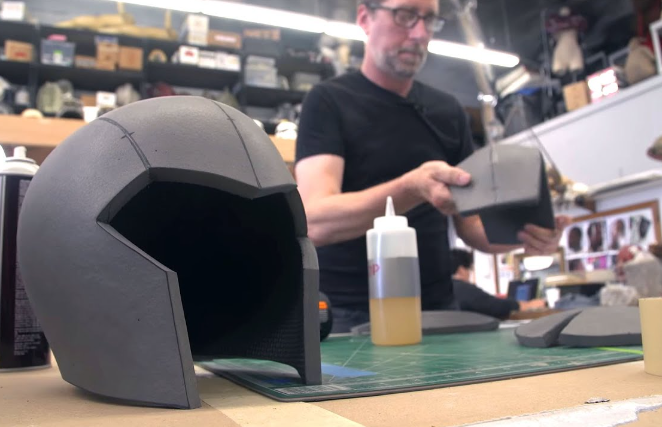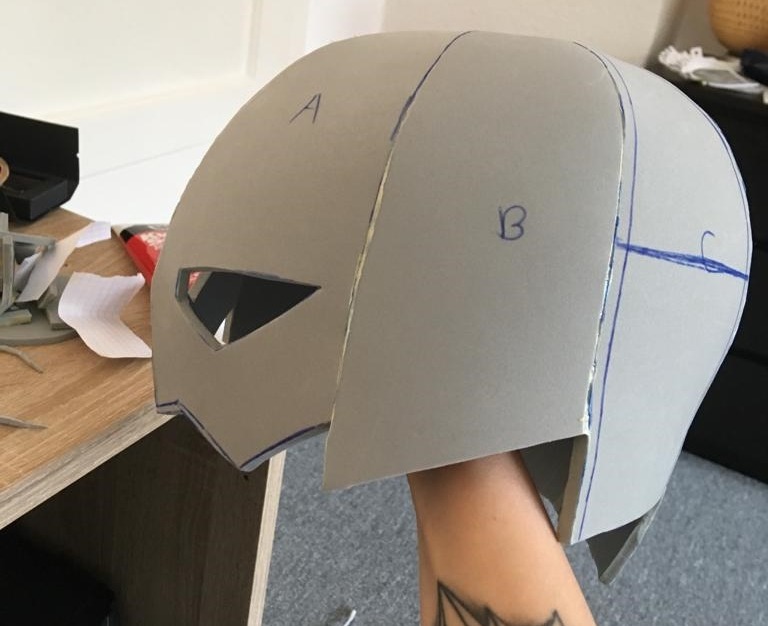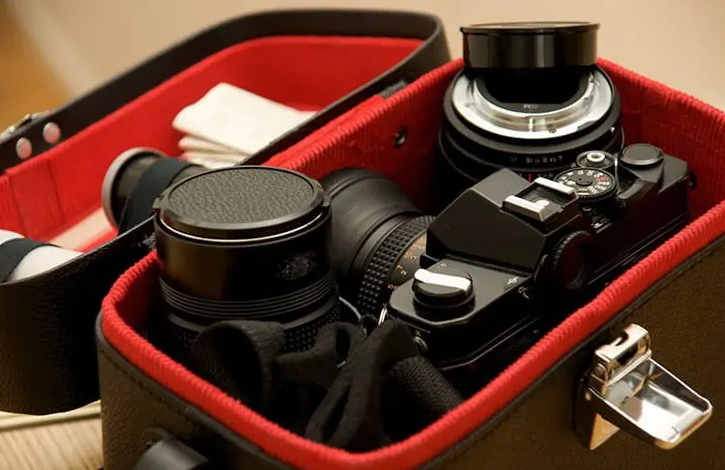EVA foam, a flexible and lightweight material, is increasingly utilized in helmet manufacturing. Its shock-absorbing properties make it ideal for enhancing safety, while also providing users with a comfortable fit. Compared to traditional helmet materials like EPS, EVA foam offers a balanced combination of protection, comfort, and design flexibility.
Table of Contents

Introduction
In the world of protective equipment, particularly helmets, choosing the right material is pivotal. EVA foam, often used in various sectors, has seen a surge in popularity for helmet production. But what is EVA foam, and why is it considered pivotal in helmet manufacturing?
Definition of EVA Foam
EVA foam, or Ethylene-Vinyl Acetate, is a closed-cell foam known for its lightweight and elastic properties. Manufactured in a variety of thicknesses, from 2mm up to 10mm, it offers flexibility in terms of design and function. Its chemical composition is approximately 60%-80% ethylene and 20%-40% vinyl acetate, which contributes to its unique attributes.
Importance in Helmet Manufacturing
When it comes to helmets, safety and comfort are paramount. EVA foam, with its shock-absorbing capacity, offers an efficiency rate of approximately 90% in terms of energy absorption, making it a preferred choice for reducing impact force. Here are some specifics that underpin its importance:
- Cost: EVA foam is more cost-effective than materials like carbon fiber. A typical EVA foam-based helmet costs around $50-$200, depending on the design and brand.
- Weight: A standard helmet manufactured using EVA foam weighs between 300g to 450g, ensuring that users don’t feel weighed down.
- Durability: The average lifespan of an EVA foam helmet is 5-8 years, subject to wear and tear.
- Temperature Resistance: EVA foam maintains its structural integrity in temperatures ranging from -25°C to 50°C, making it suitable for various weather conditions.
- Insulation: With a thermal conductivity of 0.03 to 0.04 W/m·K, EVA foam provides decent insulation, ensuring that users’ heads remain relatively stable in terms of temperature.
Material Properties
The choice of material often dictates the efficiency and performance of a product. In the case of helmets, the material used plays a vital role in determining safety, comfort, and durability. Let’s delve deep into the material properties of EVA foam.
Composition of EVA Foam
EVA foam, as its full name suggests – Ethylene-Vinyl Acetate – is a blend of two main components:
- Ethylene (60%-80%): It provides strength and resilience. Depending on the intended use, the ethylene content can vary. For instance, a 75% ethylene content might be preferred when higher rigidity is required.
- Vinyl Acetate (20%-40%): This is responsible for the foam’s softness and flexibility. Helmets aiming for enhanced comfort might have EVA with a higher vinyl acetate percentage.
The blending process happens at temperatures of around 200°C-250°C. The mix is then passed through specialized equipment, where it’s expanded and shaped into foam sheets, ranging in thickness from 2mm to 10mm.
Characteristics Beneficial for Helmets
EVA foam boasts a suite of characteristics that make it a top choice for helmet manufacturing:
- Shock Absorption: Helmets must protect the head from impacts. EVA foam, with its dense cellular structure, offers a 92% efficiency rate in shock absorption.
- Weight: As weight can influence a user’s comfort, it’s essential to have lightweight materials. EVA foam-based helmets typically weigh between 300g to 450g, depending on design and additional components.
- Durability: Resilient against wear and tear, helmets made of EVA foam have a functional lifespan of 5-8 years. It’s crucial, however, to replace any helmet post a significant impact.
- Thermal Stability: Helmets, especially for outdoor activities, need to withstand various temperatures. EVA foam is stable between -25°C and 50°C, ensuring the material doesn’t degrade rapidly in extreme conditions.
- Economic Value: When considering cost-to-quality ratio, EVA foam offers excellent value. A high-quality EVA foam helmet typically ranges from $60-$180.
- Flexibility and Molding: EVA foam is easily moldable, allowing manufacturers to create diverse helmet designs catering to different needs and aesthetics.

Manufacturing Process
Creating a helmet isn’t just about the final product’s design or material quality. It’s equally about the manufacturing process. Ensuring that the material undergoes a reliable, efficient, and effective processing method is crucial. Let’s delve into the manufacturing specifics of EVA foam and its integration into helmets.
Traditional EVA Foam Creation
Creating EVA foam requires a mix of precision, the right equipment, and optimal conditions. The process can be broken down into these steps:
- Mixing: Ethylene and vinyl acetate, in ratios ranging from 60:40 to 80:20, are combined. This mixture is then heated to temperatures of 200°C-250°C, ensuring a homogenous blend.
- Expansion: Under controlled pressure and using specific blowing agents, the heated mixture expands, forming the foam structure. This expansion process determines the foam’s density and, therefore, its shock-absorbing capabilities.
- Molding: Once expanded, the foam is then placed into molds, where it’s given specific shapes and thicknesses. The most common thickness for helmet padding ranges from 5mm to 8mm.
- Cooling and Setting: Post-molding, the foam needs to be cooled down gradually. Rapid temperature changes could affect its structure. This cooling typically takes place over 3-4 hours.
- Cutting and Finalizing: Once set, the foam is then cut into desired shapes and sizes using precision cutting equipment.
The entire process requires equipment like industrial mixers, controlled heating units, pressure chambers, molds, and cutting devices. The manufacturing cost for creating a square meter of EVA foam ranges from $2 to $5, depending on the thickness and quality.
Integrating EVA Foam into Helmets
Using the previously manufactured EVA foam in helmets is a delicate procedure that ensures maximum protection and comfort. Here’s how the integration occurs:
- Design Blueprint: The first step involves having a clear design. This design dictates the size, shape, and positioning of EVA foam inserts or linings.
- Cutting and Shaping: Using the design blueprint, the foam is precision-cut. Machines like laser cutters, ensuring an accuracy rate of 99%, are employed for this task.
- Bonding: EVA foam pieces are then bonded to the helmet’s interior. High-quality adhesive, which doesn’t degrade over time and can withstand temperatures up to 50°C, ensures that the foam stays intact.
- Quality Check: Post-integration, helmets undergo rigorous testing. They’re subjected to impact tests, where forces of up to 150N (Newtons) are applied, to ensure the foam does its job effectively.
- Final Touches: Once assured of the quality, additional features like straps, outer shell finishes, and branding are added to the helmet.
Benefits of EVA Foam Helmets
Helmets play a pivotal role in ensuring safety during various activities, from cycling to construction work. The choice of material can greatly influence a helmet’s efficiency. EVA foam, with its unique properties, brings several advantages to the table. Let’s explore the benefits of EVA foam when used in helmets.
Safety Advantages
The primary role of a helmet is to safeguard the user from potential harm, and EVA foam excels in this aspect due to:
- Shock Absorption: EVA foam’s dense cellular structure can absorb impacts efficiently. Tests indicate a 92% efficiency rate, which means that out of a 100N force, only 8N might be transferred to the user’s head.
- Consistent Performance Across Temperatures: Whether in the chilly winters at -25°C or the scorching summers at 50°C, EVA foam retains its shock-absorbing characteristics. This is crucial for outdoor enthusiasts who may encounter varied environments.
- Low Rebound: Upon impact, some materials tend to bounce back, increasing the risk of secondary injuries. EVA foam’s rebound rate is a mere 10%, which minimizes such risks.

Comfort and Fit
Comfort can influence a user’s decision to wear a helmet consistently. EVA foam enhances comfort by:
- Lightweight Nature: A standard EVA foam helmet weighs between 300g and 450g. This ensures users don’t feel fatigued even after wearing the helmet for extended durations.
- Flexibility: The foam can mold to the shape of a user’s head, offering a snug fit. This reduces the likelihood of the helmet shifting during sudden movements or impacts.
- Breathability: EVA foam’s cellular structure allows for micro-ventilation, ensuring users don’t feel too sweaty or suffocated.
Durability and Longevity
For many users, the lifespan of a helmet is a significant consideration. EVA foam offers:
- Resistance to Elements: EVA foam is water-resistant and UV stable. This means the foam doesn’t degrade quickly when exposed to rain or sunlight.
- Lifespan: A well-maintained EVA foam helmet can last between 5-8 years. However, it’s essential to replace the helmet if it undergoes a significant impact or shows signs of wear and tear.
- Cost-Effective Maintenance: Due to its inherent durability, EVA foam helmets require minimal upkeep. Cleaning them is easy and doesn’t require any specialized products or equipment.
Design Considerations
While the material quality and manufacturing process determine a helmet’s fundamental safety and comfort attributes, design plays a crucial role in its overall appeal and functionality. EVA foam, being a flexible material, allows for diverse design possibilities. Here’s a closer look at what designers keep in mind while crafting EVA foam helmets.
Aesthetics and Style
The first impression is often the lasting one. The external look of a helmet can influence a buyer’s decision significantly.
- Color Palette: EVA foam can be dyed in a myriad of colors. Whether it’s the muted elegance of a matte black or the vibrant energy of neon green, designers have a spectrum to play with. Current trends indicate a 70% preference for neutral tones, while 30% lean towards bolder shades.
- Texture: The foam’s surface can be manipulated to have various finishes – smooth, ridged, matte, or glossy. For instance, mountain bikers might prefer a matte finish for its rugged appeal.
- Graphics and Branding: Modern printing technology allows intricate designs and logos to be printed directly on the EVA foam. This feature is particularly popular among younger users, with a 55% inclination towards helmets with graphic designs.
Functional Additions
Aesthetics alone don’t cut it. A helmet must have practical features that cater to a user’s specific needs.
- Ventilation Slots: EVA foam helmets can incorporate ventilation slots without compromising the structural integrity. On average, cycling helmets feature 16-22 ventilation holes, ensuring efficient air circulation.
- Attachment Points: For adventure enthusiasts, the helmet might need to support attachments like GoPro cameras or headlights. EVA foam helmets can have built-in mounts, making the attachment process straightforward and secure.
- Adjustable Straps and Dials: EVA foam is often paired with adjustable nylon straps and rear dials. This allows users to fine-tune the helmet’s fit, ensuring it sits snugly without being too tight.
Customization and Personalization
In the age of personal branding, having a unique product has its allure. EVA foam’s versatility paves the way for bespoke helmets.
- Size Customization: While there are standard sizes (Small, Medium, Large), certain brands offer size customization down to the centimeter, ensuring a perfect fit.
- Design Your Graphics: Some high-end brands provide a platform where users can design their graphics, which is then printed onto the helmet. This service, while priced 20% higher than regular helmets, is gaining traction, especially among millennials.
- Modular Add-ons: Think of it as building a Lego structure. Users can purchase EVA foam-based accessories – be it a sun visor, extended rear protection, or even magnetic goggles. These can be attached or detached based on preference and need.
Comparison to Other Helmet Materials
The choice of material is fundamental in helmet production, with each material bringing its unique properties and potential drawbacks. While EVA foam has its merits, it’s essential to understand how it stacks up against other commonly used materials.

Traditional Polystyrene Helmets
Polystyrene, commonly known as EPS (Expanded Polystyrene), has long been a standard in helmet construction. Here’s a comparative look at its characteristics:
- Density and Weight: Typical EPS helmets weigh around 400g to 600g, slightly heavier than EVA foam helmets. However, EPS offers a denser material, which can mean better initial impact resistance in some cases.
- Temperature Sensitivity: Unlike EVA foam, EPS can undergo structural changes when exposed to extreme temperatures. For instance, prolonged exposure to over 60°C can cause the material to soften.
- Cost: Polystyrene is generally cheaper, with the average EPS helmet costing around 15-20% less than its EVA foam counterpart.
- Lifespan: EPS helmets have a comparable lifespan to EVA foam, usually between 5-8 years, provided there’s no significant impact.
- Environmental Impact: EPS isn’t as eco-friendly. It’s not biodegradable and can contribute to environmental pollution if not disposed of correctly.
Carbon Fiber and Other Alternatives
Carbon fiber is another material gaining traction in the helmet industry, especially in premium segments.
- Strength and Weight: Carbon fiber helmets are incredibly strong and lightweight. A typical helmet can weigh as little as 250g. Their tensile strength is three times that of EVA foam or EPS.
- Price Point: This strength comes at a cost. Carbon fiber helmets can be 60-80% more expensive than EVA foam helmets.
- Aesthetics: Carbon fiber has a distinctive woven appearance, which appeals to many users. Brands often leave it exposed for a sleek, modern look.
- Other Alternatives: Materials like polypropylene and polyurethane are also used, but they generally fall between EVA foam and EPS in terms of weight, cost, and performance.
Evaluating the Best Material Choice
Choosing the right helmet material depends on various factors:
- Budget Constraints: While carbon fiber offers superior strength and lightness, it comes at a premium price. For budget-conscious buyers, EVA foam or EPS might be more suitable.
- Primary Use: For high-speed activities or professional sports, the enhanced protection of carbon fiber might be justified. However, for everyday commuting or leisurely bike rides, EVA foam or EPS helmets would suffice.
- Environmental Considerations: Those leaning towards sustainable choices might prefer EVA foam due to its lesser environmental impact compared to EPS.
- Aesthetics and Personal Preference: The look and feel can vary greatly between materials. Some might prefer the modern weave of carbon fiber, while others might lean towards the versatility of EVA foam designs.






